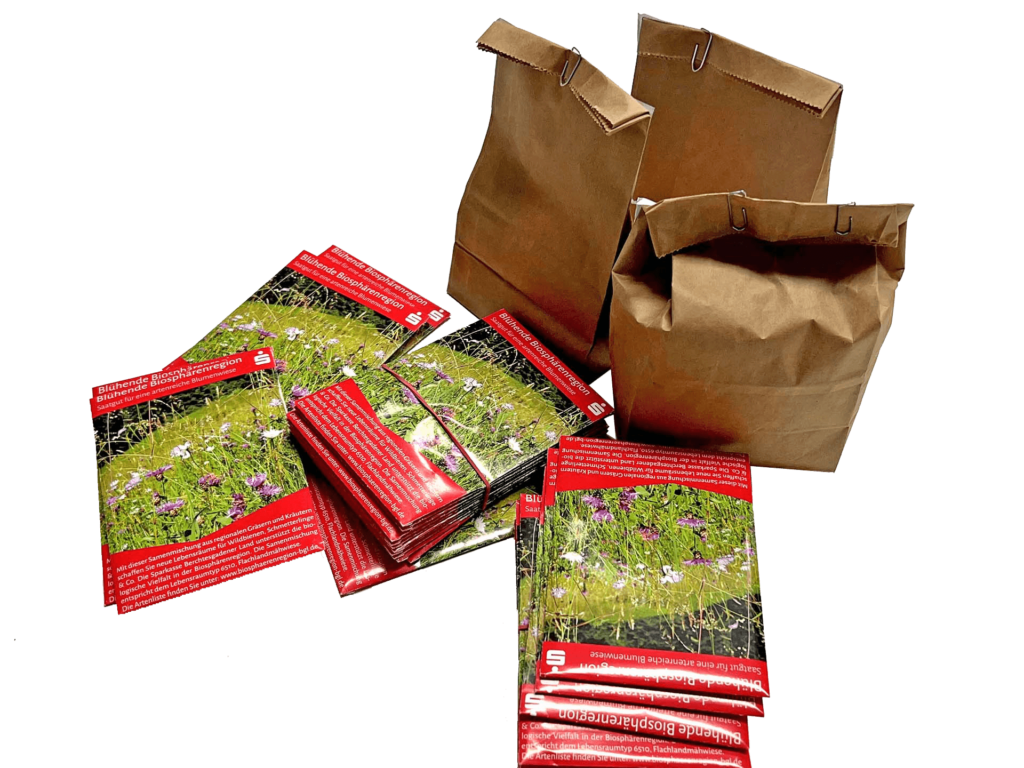Create and care for a flowering meadow yourself
If you want to plant a species-rich, perennial flowering meadow with regional seed, you should take a few things into account: Compared to classic lawns or annual flowering mixtures, a perennial flowering meadow needs more time to develop and requires some maintenance in the early years. Here are a few tips to help you get it right from the start.
Successfully create a flowering meadow
- The right seed material: when buying the seed, make sure that it is actually meadow seed. In stores you can find many mixtures that contain more cultivated plants than meadow plants, e.g. marigolds or phacelia. These flowers look beautiful in the first year, but disappear afterwards. Therefore, the proportion of cultivated plants should be low.
- Good soil preparation: In general, the seeds should be sown on open soil. The better the previous vegetation, e.g. lawn, has been removed, the more successfully the new plants can establish themselves. This is best achieved on meager soils, i.e., areas that contain few nutrients. Leaning can be accomplished by frequent mowing without fertilizing or by replacing the nutrient-rich topsoil with gravelly substrate.
- The right timing: Seeding is best done in spring or fall, because at this time there is sufficient soil moisture (dew!). Seeds must be kept moist for 6 to 8 weeks to germinate. Be careful in the fall as early frost can harm the seedlings.
- Plant pre-grown wild shrubs: Seeded areas can be supplemented with pre-sown wild perennials. Some nurseries have begun to preplant small perennials from wild plant seeds. If these are additionally planted, you will have blooming success already in the first year.
- Start early with maintenance: When species such as dock, goosefoot, fleabane and similar species begin to establish themselves, it is best to remove them right away. Typically, two to three rounds of maintenance are required in the first two years. After that, the population becomes more established. A flyer with tips on care is available for download.
- Bring patience and the joy of observation.

Seed bags
In cooperation with the Administration Office, Sparkasse Berchtesgadener Land has put together a good 50 different herbs and grasses of a typical lowland meadow (LRT 6520). You can use them to create a small flowering area in your own garden or on your balcony. The species are composed of typical meadow flowers, but also cultivated species. A detailed list of the varieties is available for download. You will observe that depending on the location, some species feel more comfortable than others.

Your contact person
Sabine Pinterits
Landscape ecology and biodiversity